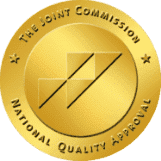Mixing Opioids and Alcohol
Mixing Opioids and Alcohol
The Dangers of Mixing Alcohol and Opioids

Article Contents
Introduction
Opioid overdose deaths in 2016 were five times higher than in 1999. The majority of those deaths were unintentional. Although opioid painkiller prescriptions are becoming more tightly regulated, cases of overdose and addiction are still increasing. On top of this, opioids are often taken with other substances, like alcohol, to enhance their effects. But mixing alcohol and opioids can have hazardous consequences.
LEARN MORE
Opioid Addiction Dual Diagnosis Detox to Start HealingWhat are Opioids?
Opioids are a class of drugs produced from the opium poppy plant. Doctors use prescription opioids as painkillers. Patients suffering from persistent or severe pain use opioids. There are also illicit opioids sold on the street, such as heroin.
Find Help Now
Opioids act on the body’s opioid system by binding to opioid receptors in the brain. Opioids bind much more strongly to opioid receptors than endorphins, making them better at managing severe pain.
Opioid drugs are very effective pain killers, but they are also highly addictive.
Drug Class and Schedule
Opioids belong to the narcotic class of drugs. The poppy plant is the source of all-natural opioids. In contrast, synthetic opioids such as fentanyl and methadone are made entirely in a lab. Semi-synthetic opioids such as heroin, oxycodone, and hydrocodone derive from naturally occurring opium products.Whether synthetic or derived directly from opium, these compounds are collectively known as opioids.
Opioids are controlled substances due to their risk of abuse. Some opioids are Schedule I drugs while others are Schedule V. The schedule depends on:1
- Their approved medical use
- The risk for misuse
- The likelihood of developing a physiological dependence
For example, heroin is a Schedule I substance, fentanyl is a Schedule II narcotic, and Tramadol is a Schedule IV drug.
Common Opioids
Oxycodone
Oxycodone is a semi-synthetic narcotic analgesic and a Schedule II drug. This drug can be taken orally or intravenously. It has a high potential for abuse is due to its effects on the brain, producing euphoria and feelings of relaxation. Combining oxycodone and alcohol can have hazardous consequences.Hydrocodone
Hydrocodone is a semi-synthetic painkiller often prescribed for the treatment of moderate to severe pain. Hydrocodone is also effective at reducing cough by decreasing activity in the brain that causes coughing. In the US, hydrocodone is a Schedule II controlled substance. Mixing hydrocodone and alcohol could lead to life-threatening respiratory problems.
Fentanyl
Fentanyl is a potent synthetic opioid that has an approved medical use as an analgesic and anesthetic. It is 50 times more potent than heroin and 100 times more potent than morphine as an analgesic. Fentanyl is a Schedule II narcotic with a high risk of abuse. Like other opioids, it produces effects such as relaxation, sedation, euphoria, and pain relief.
The Dangers of Mixing Opioids and Alcohol
Respiratory Depression
Opioid use triggers dopamine release, which is linked to feelings of pleasure. Dopamine may also be responsible for the sense of euphoria that characterizes an opioid high.
Apart from dopamine, opioids also affect the release of another neurotransmitter called noradrenaline. Opioids suppress noradrenaline release, responsible for functions such as wakefulness, breathing, digestion, and blood pressure.
Taking high doses of opioids can decrease your heart and breathing rates to dangerous levels. If mixed with another central nervous system (CNS) depressant such as alcohol, it can have fatal consequences.
A study published in the Online First edition of Anesthesiology found that taking one oxycodone tablet with a small amount of alcohol increases the risk of a life-threatening side effect called respiratory depression.2
It is one of the most severe side effects of mixing opioids and alcohol. Respiratory depression happens when breathing becomes extremely shallow or stops altogether.
Serious Side Effects and Symptoms
Alcohol and opioids can enhance each other’s effects, possibly leading to dangerous intoxication and overdose. The risk of severe side effects is high even if a person takes a painkiller as prescribed and drinks moderate amounts of alcohol.
In addition to respiratory depression, some of the most common serious side effects and symptoms of the combination include:
- Dehydration
- Vomiting
- Changes in blood pressure
- Loss of coordination
- Loss of consciousness
- Irregular heart rate
- Overdose
- Coma
According to the U.S. Centers for Disease Control and Prevention, 78 people die from opioid overdoses every day. Many of these opioid-related overdoses involve other substances like alcohol.3
Side Effects of Opioids and Alcohol
Side Effects of Oxycodone
The most common side effects of oxycodone include:
- Nausea
- Constipation
- Stomach pain
- Vomiting
- Sleepiness
- Drowsiness
- Headache
- Dry mouth
- Loss of appetite
- Sweating
Side Effects of Hydrocodone
Hydrocodone can produce the following side effects:
- Constipation
- Nausea
- Dizziness
- Drowsiness
- Feeling tired
- Headache
- Cold-like symptoms
The side effects usually go away within a few days or a couple of weeks. If they persist, get in touch with your doctor or pharmacist.
Side Effects of Fentanyl
Some of the more common side effects of fentanyl include:
- Nausea
- Vomiting
- Tiredness
- Dizziness
- Trouble sleeping
- Constipation
- Sweating
- Cold-like symptoms
- Headache
- Diarrhea
- Loss of appetite
The side effects usually go away within a few days or a couple of weeks. If they persist, get in touch with your doctor or pharmacist.
Side Effects of Alcohol
Delirium Tremens
Around 50% of people with a history of alcohol abuse develop withdrawal symptoms upon decreasing or stopping their alcohol consumption. Only 3% to 5% of those 50% show severe alcohol withdrawal symptoms. Severe symptoms include profound confusion, autonomic hyperactivity, and cardiovascular collapse.4 The most severe form of ethanol withdrawal is called delirium tremens (DT).
Delirium tremens can appear as early as 48 hours after the last alcohol use and can last for up to five days. Without appropriate treatment, it has an anticipated mortality of up to 37%.
Treatment for Opioids and Alcohol
Detox
If someone who is physically dependent on opioids stops taking them abruptly, a range of withdrawal symptoms can appear. Some of these symptoms include vomiting, muscle aches, stomach pains, and fever. Opioid withdrawal can be incredibly debilitating. Sometimes, patients may experience severe withdrawal symptoms for days or weeks after their last use.
Alcohol withdrawal can also appear if a person suddenly stops drinking alcohol after regular excessive drinking. The symptoms can range from severe to mild, including anxiety, tremors, seizures, and high blood pressure.
As the symptoms of opioid and alcohol withdrawal can be life-threatening, medically managed withdrawal, also called detoxification, is recommended.
One detoxification option is tapering that involves gradually reducing the dose until the patient is no longer taking the drug. The patient may also receive opioid agonist maintenance therapy with drugs such as methadone and buprenorphine.
There is no universally accepted tapering rate. However, research has found that slower tapes are more successful.4
Inpatient
Detoxification from alcohol and opioids is only the first step towards recovery. In addition to detoxification, inpatient treatment is another critical element for treating addiction to alcohol and opioids.
Inpatient treatment is a highly structured treatment program that can take place at a rehab center or another medical facility. During inpatient treatment, you attend multiple activities, such as 2-step self-help meetings, group psychotherapy, relaxation classes, educational classes, and individual therapy.5
Medication-Assisted Treatment
Medication-assisted treatment (MAT) uses medications, counseling, and behavioral therapies to treat substance use disorders.
Buprenorphine, methadone, and naltrexone are often used to taper off an opioid. They can also be prescribed to help keep cravings under control. The most commonly used medications for alcohol use disorder are disulfiram, naltrexone, and acamprosate.6
This information should not replace a visit to a doctor or treatment center. If you are concerned that you or a loved one might be suffering from opioid addiction, alcohol dependence, or both, ask for professional help today.
Resources- https://www.getsmartaboutdrugs.gov/sites/getsmartaboutdrugs.com/files/publications/Drugs%20of%20Abuse%202020-Web%20Version-508%20compliant.pdf
- https://www.asahq.org/about-asa/newsroom/news-releases/2017/02/mixing-opioids-and-alcohol-may-increase-likelihood-of-dangerous-respiratory-complication
- https://www.webmd.com/mental-health/addiction/news/20170208/opioids-and-alcohol-a-dangerous-cocktail
- https://www.ncbi.nlm.nih.gov/books/NBK482134/
- https://bmcpsychiatry.biomedcentral.com/articles/10.1186/s12888-015-0493-y
- https://www.samhsa.gov/medication-assisted-treatment




